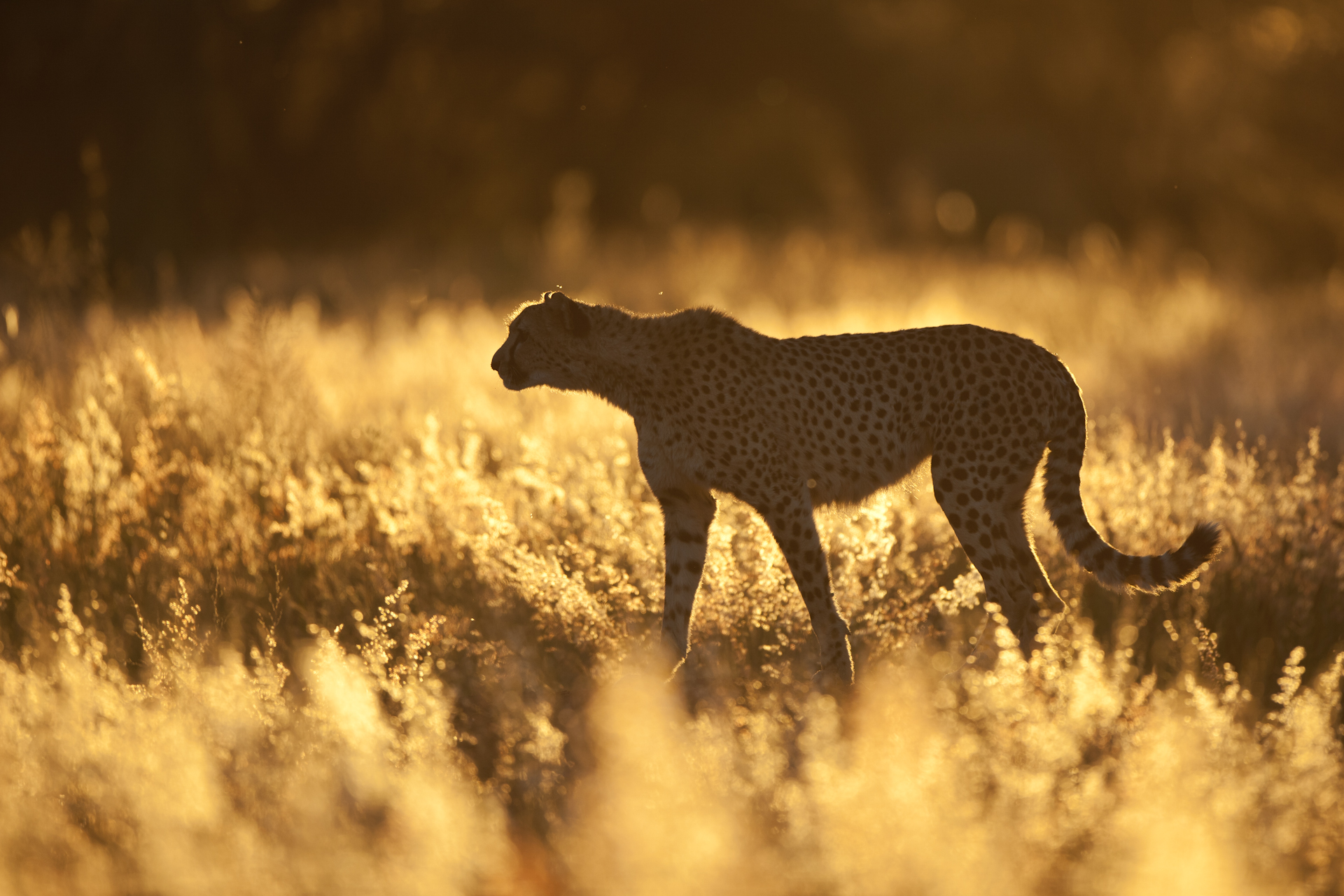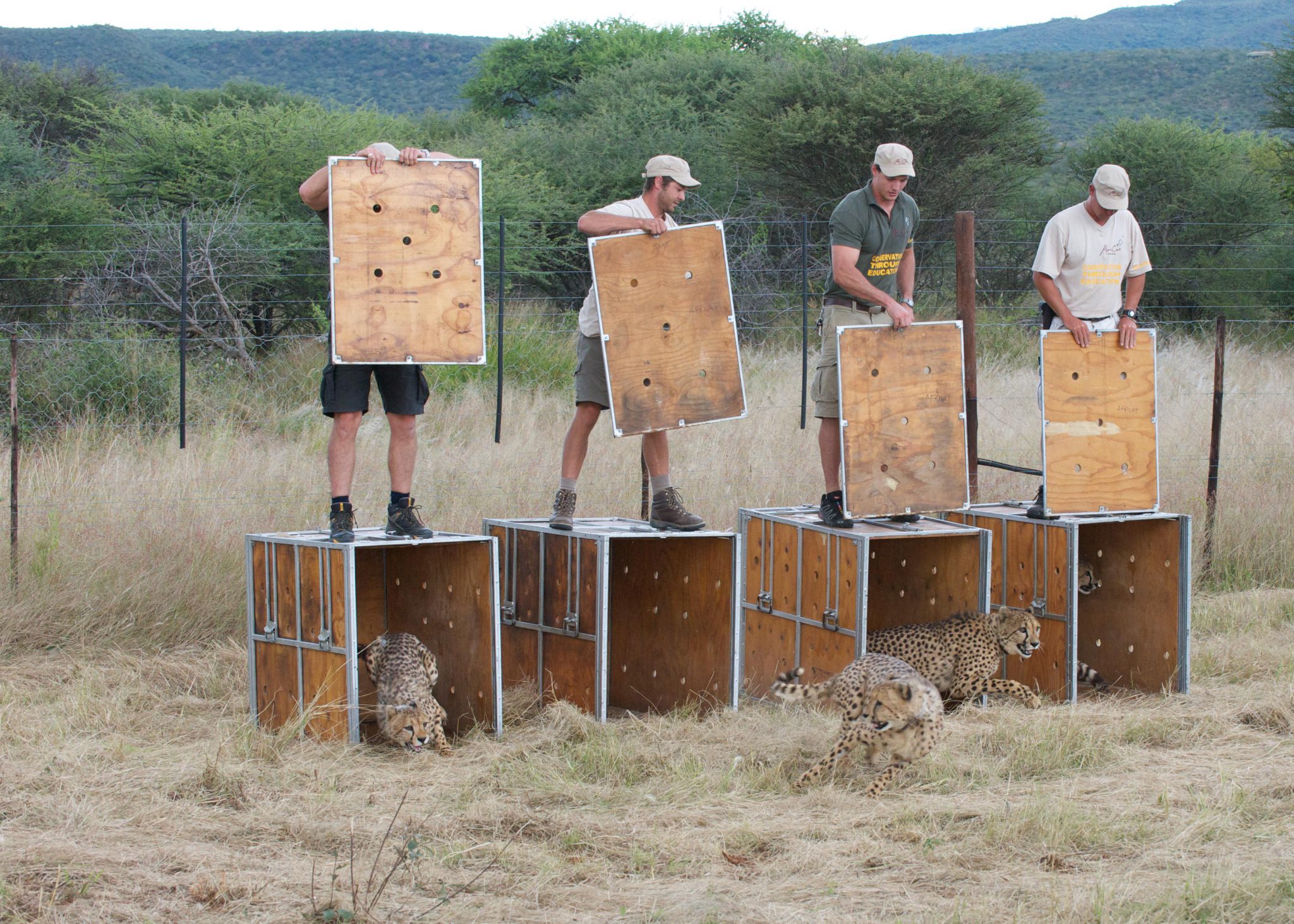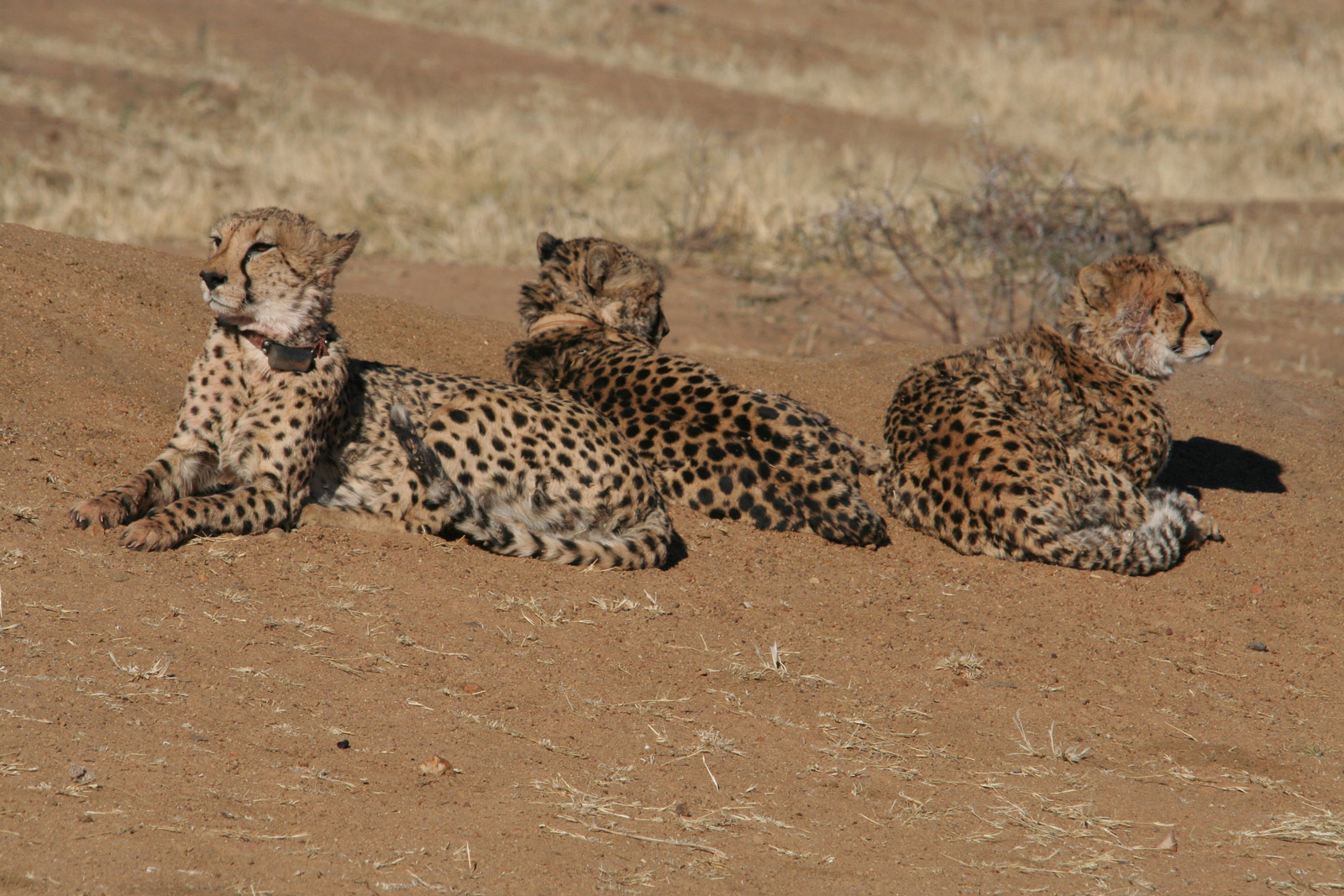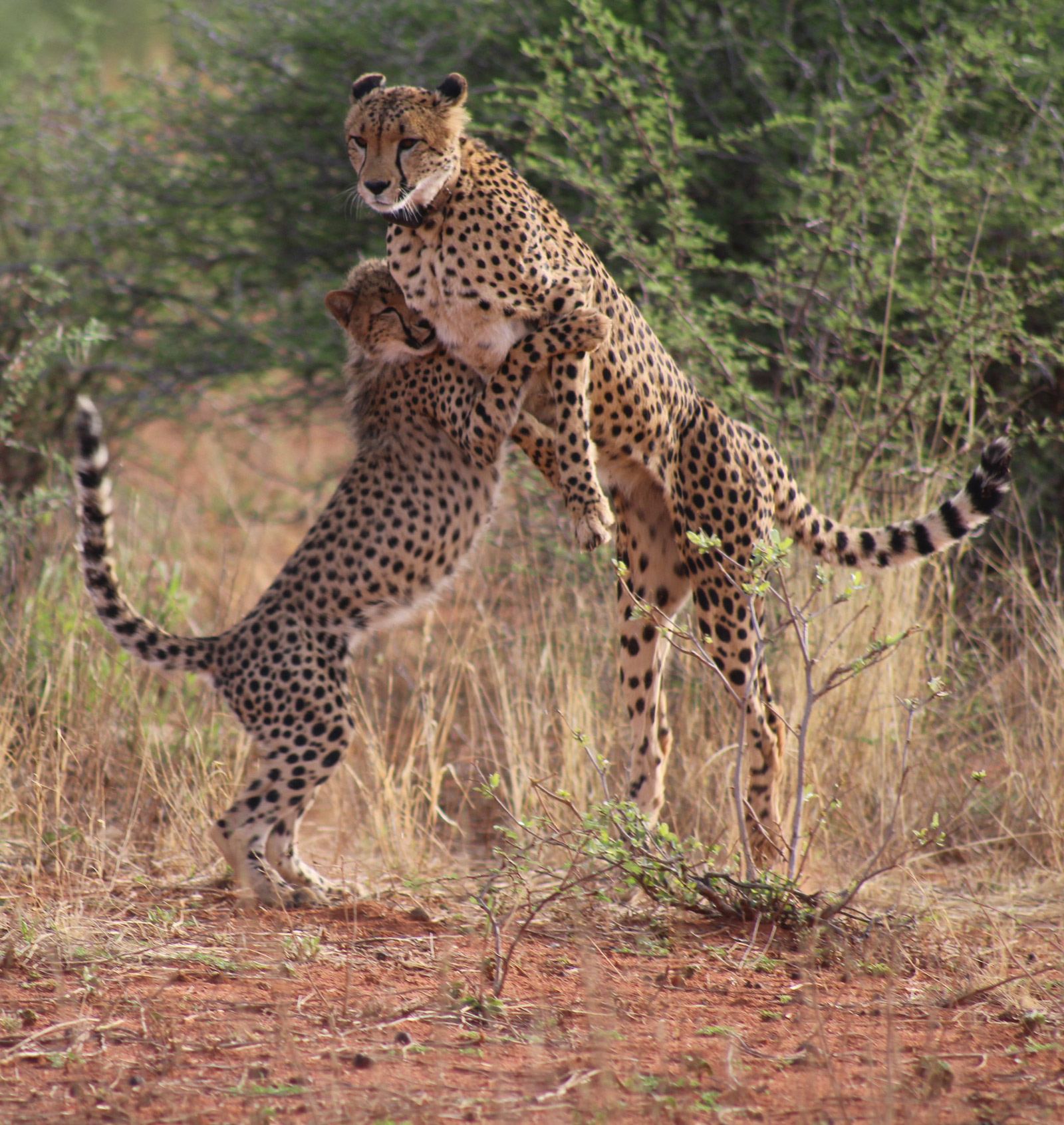 Cheetah at Okonjima
Cheetah at Okonjima
An update on the AfriCat’s Cheetah Rehabilitation programme – the story so far….
The AfriCat Foundation developed on a cattle farm in Namibia called Okonjima in the early 1990’s, which is now a tourist lodge that you can visit www.okonjima.com . The area 100+ years ago was home to the usual array of African wildlife. Once cattle farming arrived, many of the large carnivores notably the lion and spotted hyena were shot out by the famers as they killed their cattle. Cheetahs are the lightest, smallest by body weight and fastest of the big cats. Any injury means they cannot hunt. To thrive they need to be very wary of the other carnivores. Anyone who has been privileged enough to see a cheetah in the wild will have noticed how alert they are; ready to flee when they sense danger. They eat very fast and will give up their ‘kill’ if another predator comes along. Cheetah cubs stay with Mum until about 14-18 months old. They learn/refine their hunting skills through observation.
Namibia holds over 35% of the world’s population of wild cheetah most of which live on cattle farms. AfriCat researched and developed approaches that helped farmers to reduce their livestock losses from the Big Cats. As a result of their work AfriCat were asked to provide homes to injured or orphaned cheetahs, often as result of the mother being killed. The government asked AfriCat to look after confiscated cheetah that had been maltreated. Looking after a 100+ cheetah was expensive and ran counter to AfriCat’s desire to see the cats in their natural habitat. A decision was taken to see if any of the cheetahs could learn to hunt successfully – nothing like this had been tried at the time.

Simon Palmer
A small area 2,000ha of Okonjima, with prey, was securely fenced and the first group of cheetah given their freedom. The collard cheetahs were closely monitored. Some cheetah took to the idea of hunting; others did not. With research that indicated cheetah could learn to hunt successfully. The next step was to introduce groups of cheetah into the then fenced 20,000ha Okonjima Nature Reserve. This had naturally occurring leopard and brown hyena populations plus three collared spotted hyena. There were casualties as cheetah took on inappropriate prey, became injured or tried to defend their kills from the leopard or hyenas but there were successes too. It was found for example that cheetah working together in coalitions tended to be more successful. The ‘siblings’ a trio did well for a few years. Being used to humans and vehicles the ex captive cheetah, now living wild, could be tracked through their collars providing guests a rare opportunity to get up close and on occasions walking to get closer.
A pattern emerged that worried the team. Unlike wild cheetahs those released from captivity did have a tendency to try and defend their kills and were paying the price with injures and death. Given the difference in preferred habitat of leopard and cheetah it was hoped that by opening up the bush it could be possible to give greater separation. A grassland management programme had been started to try to restore the land to what it would have been prior to cattle ranching. This project has increased the diversity of plant, bird and animal species. With some cheetah successfully rehabilitated a decision was taken to allow breeding in the reserve, could a rehabilitated cheetah successfully rear young? The answer was yes in favourable conditions. Dizzy was able to raise her cub called Spirit to maturity, she lived and independent natural life in the bush before she died. AfriCat found that the mortality rate of cubs born to rehabilitated cheetah was higher than for wild cheetah. Nature in the raw is never easy. The chance to spend time on foot in the close proximity of cheetah in the wild has been a very rare and special privilege.
The research work on leopards indicated that that there was a very high density of leopards in the Nature Reserve. Research data has shown that big cats have a homing instinct which makes relocating them a bit problematic. The latest leopard study shows a very high density of collared and non collared leopards at Okonjima. While brown hyenas were known to be on Okonjima there has been a steady increase in sightings. Undertaking research into Brown Hyena is now easier to do with collars and camera traps and revealing fascinating information about this little known species.
A detailed analysis of data showed that over 87% of ex captive cheetah being released into the Okonjima Nature Reserve were dying within a year and after some particularly difficult losses and incidents a decision was taken to stop the rehabilitation programme. It’s clear from the work undertaken by the AfriCat Foundation that captive cheetah can successful learn to hunt and raise cubs but they need space and low densities of other predators to succeed. Space sadly is becoming a rare commodity. Cheetahs growing up in the wild it would appear develop ‘better’ survival skills. The AfriCat Foundation does occasional get requests to ‘home’ a wild cheetah that would otherwise be shot. In such circumstances they would be offered a new home in the Okonjima Nature Reserve.
Guests at Okonjima will be able to visit the AfriCat Carnivore Care Centre and see cheetah who will be living in large ‘camps’ and helping to support AfriCat’s education programme and research work. Activities for guests staying at Okonjima Lodge will include the opportunity to undertaken wildlife trails in the Nature Reserve looking for a wide range of species including the opportunity to track leopard, and possibly see the white rhino and brown hyena. Bushman walks provide a wonderful way to learn more about nature and how local people like the bushman made use of the things in their environment. A visit to the AfriCat Carnivore Care Centre will give scope for photographers to learn about the challenges the Big Cats face in their survival.
For more information on Africat check out https://africat.org/cheetah-research
For more information on our wildlife trips to Nambia click here




